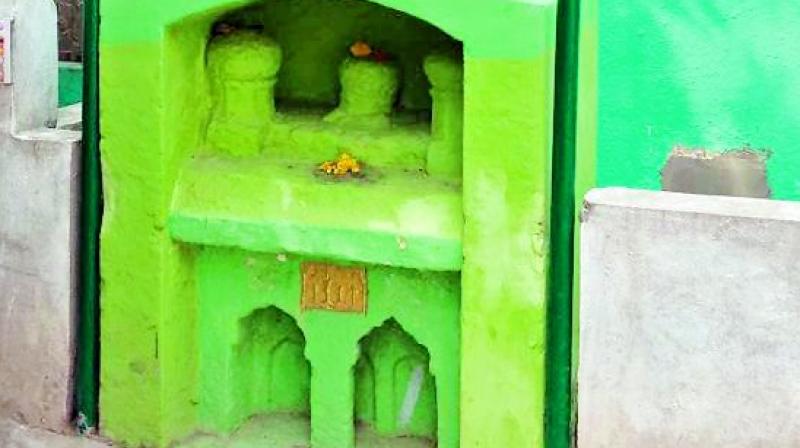400-yr-old miniature mosque in Eluru lies in neglected state

Vijayawada: A 400-year-old rare and unique miniature mosque is crying for protection in Eluru city in West Godavari district according to Vijayawada-based noted archaeologist and CEO of the state and cultural centre of Vijayawada and Amaravati (CCVA), Dr E. Sivanagireddy. He visited the mosque on Friday based on the information provided by an Eluru-based RTI activist, B.K.S.R. Iyengar.
After a thorough examination of the mosque, Dr Reddy said that it was the only one of its kind in entire Indian context in its size and elevation. It measures 3 ft in length and 5 ft in height and is built of stone in typical Qutb Shahi style of architecture, delineated with arches and minars. It lies unnoticed and uncared for in a small lane adjacent to East Street (Toorpu Veedhi) near Shivaiah School in the city. The pity is that it is taken care of by the local non-Muslims.
Since it is small in size with two arches of one foot height and two minars of the same height on top of an eave slab on either side, the locals call it Budda (small) Masjid or Eksthambh Masjid as it has a single pillar in between the arches.
Dr Reddy said the miniature mosque might have been built during the early 16th Century AD when the coastal tracts of Andhra, including Kondapalli and other forts, were annexed by Sultan Quli of the Qutb Shahi dynasty in 1530 AD, a little after the death of Sri Krishnadevaraya who was the overlord of coastal Andhra.
It is also attested by the Malkapuram (Ibrahimpatnam) inscription of Qutb Shahi-ul-Mulk dated March 20, 1531 AD, which records that the Sultan captured many forts including Kondapalli (might be Eluru also as the surrounding area of the miniature mosque is still called as Kota Divya meaning the mound of the fort).
Due to the archaeological, historical and architectural significance of this rare and only miniature mosque, Dr Reddy appealed to the state department of archaeology and museums to declare it as a protected monument under the provisions of the Act. He feels only then it will draw nation-wide attention.
Dr Reddy further added that this miniature mosque might have been erected to fulfil the religious requirements (5 times Namaz, offering prayers) of the Qutb Shahi emperors during their tour of coastal Andhra.

